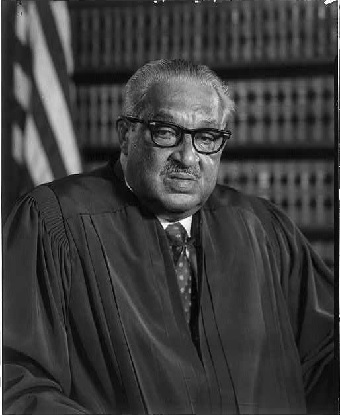Last updated: December 16, 2020
Person
Thurgood Marshall

From Library of Congress, prints and photographs division (LC-DIG-ds-11820)
Thurgood Marshall led a life in the pursuit of equality, and was on a path destined to lead him to the U.S. Supreme Court. As chief council for the National Association for the Advancement of Colored People (NAACP), he helped to lay the groundwork that led to the Brown v. Board of Education decision. As a U.S. Supreme Court justice he devoted his life to obtaining equal rights for all.
When Marshall enrolled at Howard University Law School in Washington D.C., his life forever changed. This is where he met Charles Hamilton Houston, the assistant dean of the law school and his mentor. Students were being groomed in civil rights law, and many would go on to be leaders in the field. As a top student, Marshall was able to work in the law library, giving him an opportunity to do more research, and to work personally with Houston. This would not be the last time that Marshall would work with and learn from Charles Hamilton Houston.
In 1949, Marshall, as a representative of the NAACP, met with black residents of Clarendon County, South Carolina, and determined that if enough plaintiffs could be found, they would use this as a test case for ending segregation in schools. While it would have been easy to say that the schools were not equal, this was one of the first cases that used the NAACP’s new strategy to attack the segregation itself. By using social sciences, they were going to demonstrate that segregation had a detrimental effect on the students. Separate facilities cannot be equal. Marhsall once said “Equal means getting the same thing, at the same time and in the same place.” This is what Marshall was hoping to achieve. In the courtroom, he took the offensive, and had a sense of control while arguing the Briggs case. On May 17, 1954 the unamimous U.S. Supreme Court decision was read that ended legal segregation in public schools.
Although Marshall gained fame through the Brown decision, his career was far from over. On October 2, 1967, Thurgood Marshall climbed the stairs to the highest court in our country, put on the majestic black robe, and walked into the court room to become the first African-American justice on the U.S. Supreme Court. During his 23 years on the court, he continued to speak for the rights of every American by looking at constitutional rights for all citizens.
